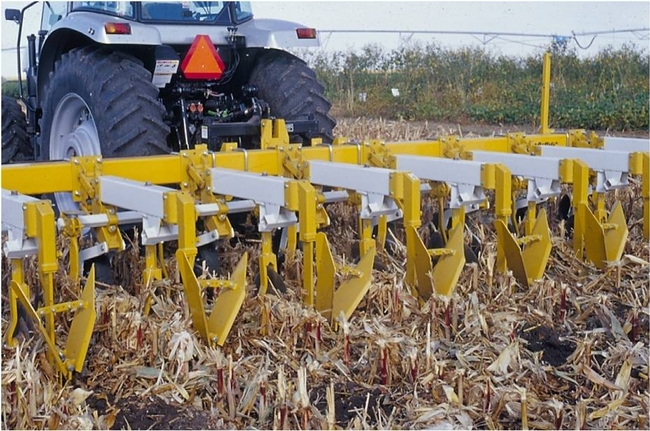Conservation Tillage
Adapted from What’s Conservation Tillage? (CTIC, 1999.)

Description
In conservation tillage, crops are grown with minimal cultivation of the soil. When the amount of tillage is reduced, the stubble or plant residues are not completely incorporated, and most or all remain on top of the soil rather than being plowed into the soil. In general, conservation tillage system is any crop farming system that leaves about a third of the soil covered after planting, to reduce soil erosion by water.
The term "crop residue management" (CRM) refers to a year-round system beginning with the selection of crops that produce sufficient quantities of residue and may include the use of cover crops after low residue producing crops. CRM includes all field operations that affect residue amounts, orientation and distribution throughout the period requiring protection. Site-specific residue cover amounts needed are usually expressed in percentage but may also be in pounds. CRM is an "umbrella" term encompassing several tillage systems including no-till, ridge-till, mulch-till, and reduced-till.
Conservation Tillage Types (CTIC, 1999)
- No-till/strip-till The soil is left undisturbed from harvest to planting except for strips up to 1/3 of the row width (strips may involve only residue disturbance or may include soil disturbance). Planting or drilling is accomplished using disc openers, coulter(s), row cleaners, in-row chisels or roto-tillers. Weed control is accomplished primarily with crop protection products. Cultivation may be used for emergency weed control. Other common terms used to describe Notill include direct seeding, slot planting, zero-till, row-till, and slot-till.
- Ridge-till The soil is left undisturbed from harvest to planting except for strips up to 1/3 of the row width. Planting is completed on the ridge and usually involves the removal of the top of the ridge. Planting is completed with sweeps, disk openers, coulters, or row cleaners. Residue is left on the surface between ridges. Weed control is accomplished with crop protection products (frequently banded) and/or cultivation. Ridges are rebuilt during row cultivation.
- Mulch-till – Full-width tillage involving one or more tillage trips which disturbs all of the soil surface and is done prior to and/or during planting. Tillage tools such as chisels, field cultivators, disks, sweeps or blades are used. Weed control is accomplished with crop protection products and/or cultivation.
Other Tillage Types
- Reduced-till (15-30% residue)Full-width tillage which involving one or more tillage trips which disturbs all of the soil surface and is performed prior to and/ or during planting. There is 15-30 percent residue cover after planting or 500 to 1,000 pounds per acre of small grain residue equivalent throughout the critical wind erosion period. Weed control is accomplished with crop protection products and/or row cultivation.
- Conventional-till or intensive-till Full width tillage which disturbs all of the soil surface and is performed prior to and/or during planting. There is less than 15 percent residue cover after planting, or less than 500 pounds per acre of small grain residue equivalent throughout the critical wind erosion period. Generally involves plowing or intensive (numerous) tillage trips. Weed control is accomplished with crop protection products and/or row cultivation.
- Unofficial: Stale seedbed is not an official category. The residue level after planting dictates the tillage category (mulch-till, reduced-till, or intensive-till. Fields are tilled full-width soon after harvest. The seedbed "settles" until planting is performed in the undisturbed (settled) seedbed or in re-formed beds (minimum disturbance). Weeds and/or cover crops are controlled with crop protection product(s) and/or row cultivation.
References
CTIC, 1999. What’s Conservation Tillage? Conservation Technology Information Center, 1999.
Peet, Mary. 1995. Sustainable Practices for Vegetable Production in the South, North Carolina State University.